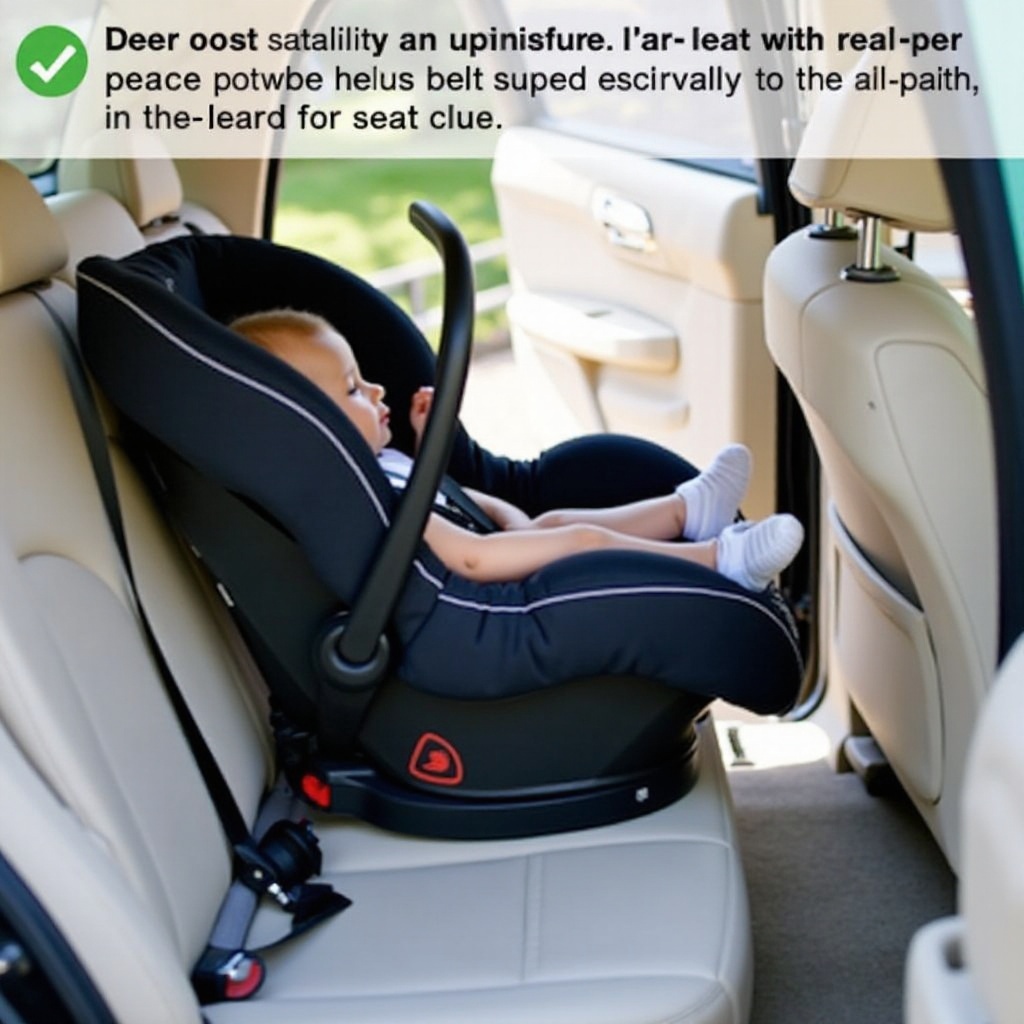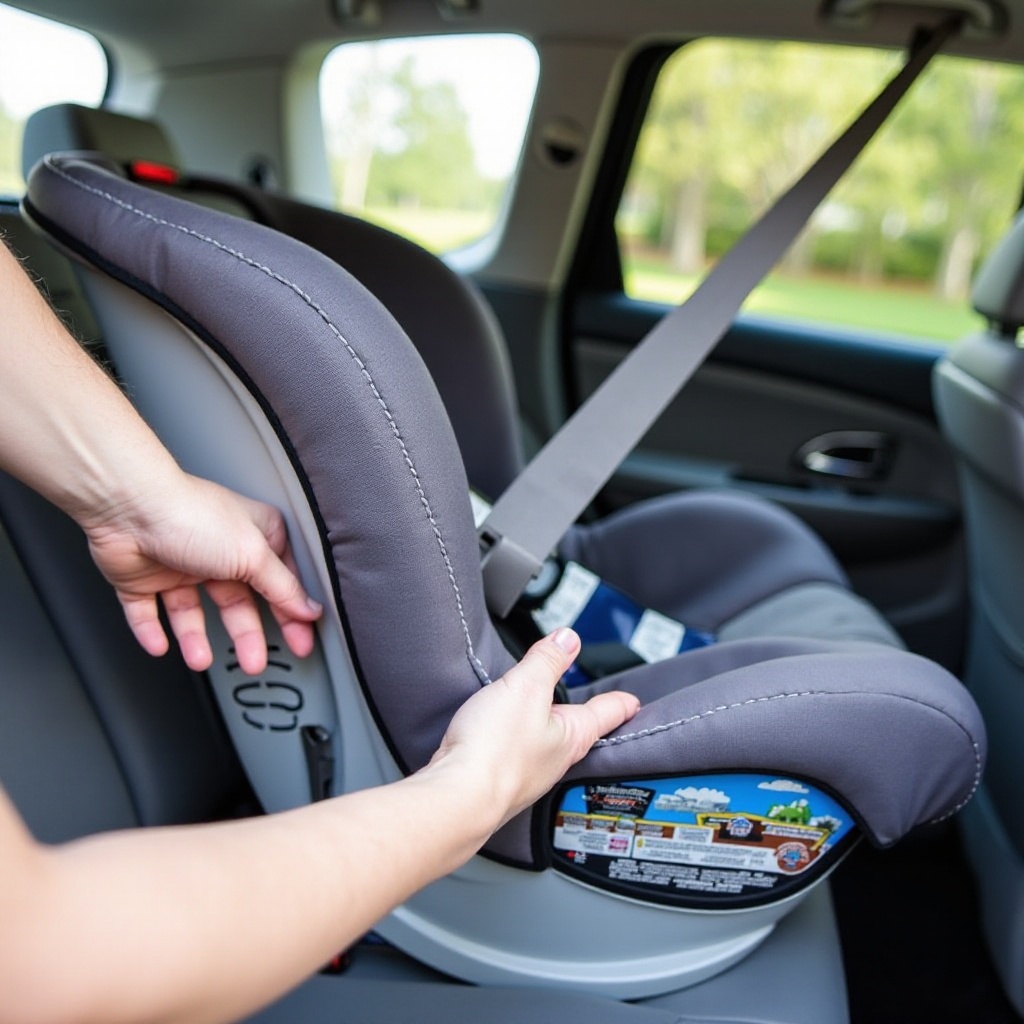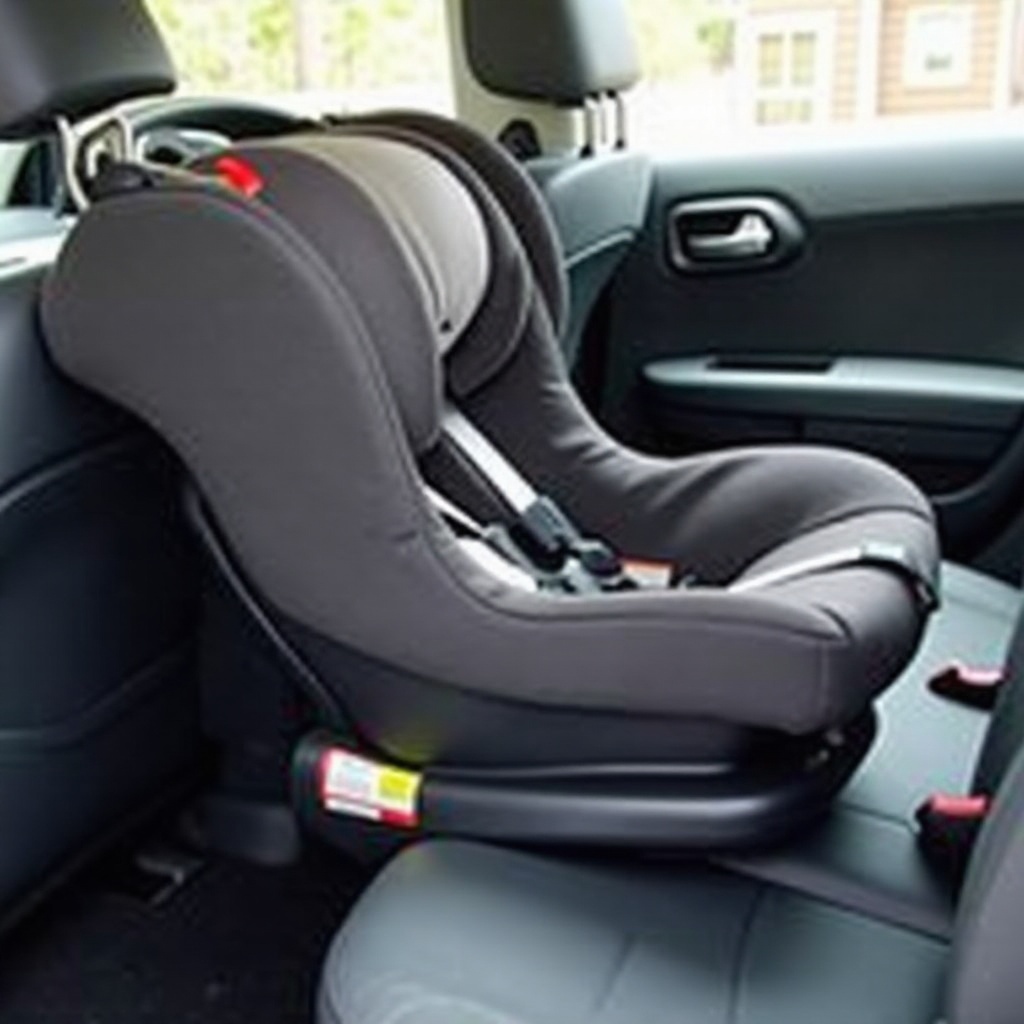Introduction
Bringing your newborn home is one of the most exciting moments you will experience as a parent. Ensuring your baby’s safety during transportation is paramount. An infant car seat is a must-have for any parent, offering the security and protection your child needs while traveling in a vehicle. Proper installation is crucial in maximizing the car seat’s effectiveness. In this article, we will guide you through understanding, installing, and maintaining an infant car seat with a seatbelt.

Understanding Infant Car Seats
Infant car seats are specifically designed for newborns and small babies, typically up to 35 pounds. These seats are rear-facing, which is the safest position for infants. They provide side-impact protection and feature a five-point harness to ensure your baby is securely strapped in. Many models also come with a detachable base, making it easier to transport your baby without waking them.
Choosing the right car seat is essential. There are several factors to consider, including your car’s make and model, the car seat’s size and fit, and any additional features that may enhance safety and convenience. Remember, the best car seat is the one that fits your child and your vehicle correctly and can be used properly every time.
Importance of Proper Installation
Proper installation of an infant car seat is not just recommended; it’s vital for your child’s safety. Studies show that a significant percentage of car seats are installed incorrectly, which can greatly reduce their effectiveness in a collision. A well-installed car seat ensures that in the event of a crash, the forces are distributed evenly, minimizing the risk of injury to your child.
Additionally, a correctly installed car seat allows you peace of mind while driving. Knowing that your child is secure lets you focus on the road, which contributes to overall driving safety. Taking the time to install the car seat properly is a crucial step every parent should prioritize.
Step-by-Step Guide to Installing with a Seatbelt
Installing an infant car seat using a seatbelt is a straightforward process if you follow these steps:
1. Position the Car Seat: Place the car seat in the back seat of your vehicle, preferably in the central position, which is the safest spot.
2. Run the Seatbelt Through the Path: Locate the belt path indicated on your car seat. Thread the seatbelt through this path, ensuring it is straight and not twisted.
3. Buckle the Seatbelt: Once the seatbelt is threaded through the seat, buckle it firmly.
4. Lock the Seatbelt: Pull the seatbelt all the way out to engage the retractor. This will enable the seatbelt to lock when you feed it back. This locking mechanism is crucial for holding the car seat in place securely.
5. Apply Pressure and Tighten: Push the car seat down while tightening the seatbelt. Use your weight to ensure the seat does not move more than an inch in any direction.
6. Check the Angle: Ensure that the car seat is reclined at the correct angle. Most infant car seats come with an indicator that shows whether the seat is positioned correctly.
7. Secure the Harness: Place your baby in the car seat and buckle the harness. The straps should be snug, lying flat with no twists. The chest clip should be at armpit level to keep the harness in place.
8. Final Check: Double-check all connections and ensure the seat is properly secured and doesn’t move excessively.
By following these detailed steps, you can install your car seat correctly and ensure your baby’s safety on the road.

Common Installation Mistakes to Avoid
While installing an infant car seat may seem straightforward, several common mistakes can compromise its safety. Avoid these common pitfalls:
- Loose Installation: Ensure the seatbelt or latch is tight. The car seat should not move more than an inch in any direction.
- Incorrect Angle: The recline angle is crucial for an infant’s safety. Follow the manufacturer’s guidelines.
- Harness Issues: Straps should be snug, and the chest clip should be at armpit level. Avoid loose harnesses and twisted straps.
These errors can negate the protective benefits of the car seat, so double-check your installation.
Maintaining your car seat’s safety is just as important post-installation. Ensuring that the seat remains in its optimal condition will protect your infant over the long term. Regular checks and maintenance routines are integral to this process.
Maintenance and Safety Tips
Ensuring the ongoing safety of your car seat is essential. Here are some key maintenance and safety tips:
- Regular Inspections: Check the installation regularly to ensure nothing has shifted or loosened. Make it a habit to inspect before long trips.
- Cleaning: Follow the manufacturer’s instructions for cleaning the car seat. Avoid harsh chemicals that could degrade the materials.
- Avoid Aftermarket Products: Use only accessories and parts approved by the car seat manufacturer. Non-certified products can compromise safety.
- Harness Adjustment: As your baby grows, adjust the harness for a snug fit.
- Expiration Date: Car seats have an expiration date typically found on the label. Make sure your seat is not expired.
- Crash Replacement: After a moderate or severe crash, replace the car seat, even if no damage is visible. The seat may have hidden damage.
Following these maintenance tips will help ensure that your car seat continues to provide optimal protection.

Conclusion
Installing and using an infant car seat with a seatbelt might seem daunting at first, but it is a manageable task with significant safety benefits for your child. Understanding your car seat, the importance of correct installation, and following step-by-step instructions can make the process smoother. Avoiding common mistakes ensures that the car seat performs as expected. Regular maintenance and adhering to safety tips contribute to the longevity and safety of the car seat. Your diligence in this vital task ensures peace of mind while traveling, knowing your baby is safely secured.
Frequently Asked Questions
What should I do if the seatbelt doesn’t seem tight enough?
If the seatbelt doesn’t seem tight enough, try applying more pressure to the car seat as you tighten the belt. Ensure you have engaged the locking mechanism of the seatbelt by pulling it fully out and then feeding it back. If you still have issues, seek help from a professional car seat technician.
How often should I check the installation of the car seat?
You should check the installation regularly, ideally before every trip. Make it a habit to ensure the seatbelt is tight, and the car seat hasn’t shifted from its position. Regular checks can prevent accidental loose installations.
Is it safe to use a second-hand car seat?
Using a second-hand car seat is generally not recommended unless you know the seat’s full history and it meets current safety standards. Ensure it has not been involved in any crashes, has no visible damage, and is not expired. Check with the manufacturer for recall notices.
